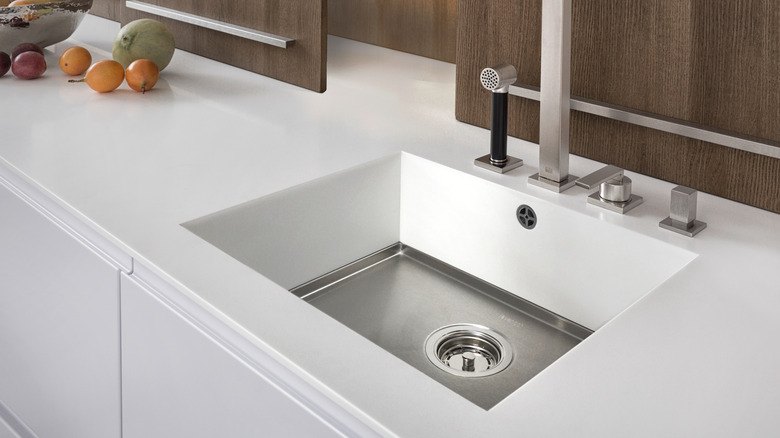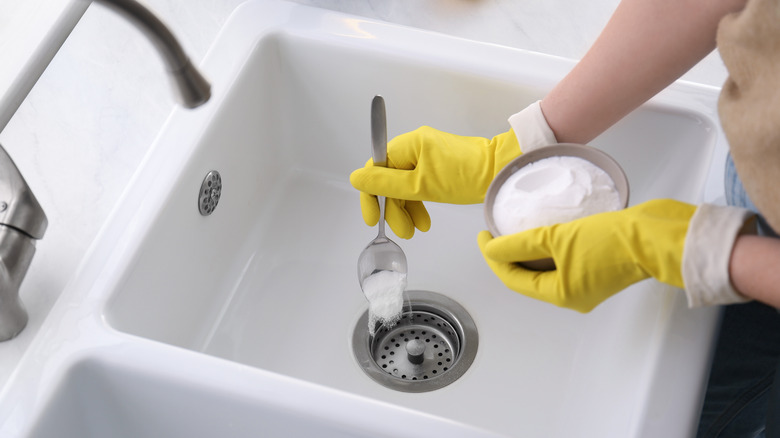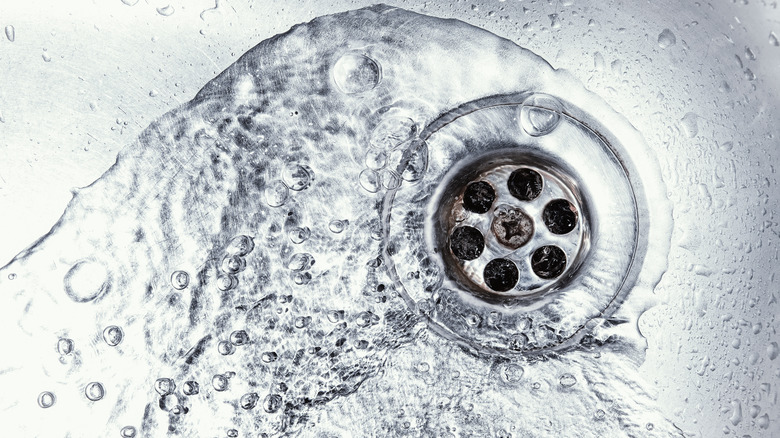An Expert Explains How To Clean Your Kitchen Sink So It's Free Of Germs
Healthy dining starts with a spotless and sanitary kitchen, and maintaining an impeccably clean kitchen sink is vital. According to Food & Wine, the sink is so bacteria-ridden and full of detritus it may qualify as one of the dirtiest places in your home — and moist food remnants dumped down the drain are a perfect breeding ground for germs, including E. coli.
In an exclusive interview with House Digest, expert Hugo Guerrero, a certified House Cleaning Technician with Mattressive, explains the best way to clean your kitchen sink so it's free of germs. The pro provides his half dozen helpful hints to ensure a safe and sparkling kitchen sink. And while it's good to start with a deep clean, Guerrero asserts this should not be a one-and-done process. "It is also a good idea to clean the sink regularly, as this can help prevent the buildup of dirt and bacteria and keep your sink looking and smelling fresh." Here are the steps you should use and reuse for a healthy space.
Give the sink a thorough scrub
Effectively cleaning the kitchen sink requires unimpeded access to the drain and all the surfaces. Per Guerrero, the first step is to "remove all dishes, utensils, and any other items from the sink. This will give you a clear view of the sink and make it easier to clean." The Mattressive authority says to start by cleaning the inside of the sink, "using a damp cloth or sponge to wipe it down." Be thorough, and don't overlook any parts of the basin. Guerrero advises, "Be sure to also clean the edges and corners, as these areas can accumulate dirt and bacteria."
Then, get ready to use a bit more elbow grease. "Use a scrub brush or a scouring pad to scrub the sink, paying particular attention to any stains or stuck-on food. You can also use a baking soda and water paste to help loosen and remove stubborn stains," Guerrero says. In addition to its stain-fighting properties, baking soda can help eliminate odors, giving your sink an added layer of freshness.
Finishing the job
Once you have scrubbed away any visible grime, your next step should be a rigorous rinse, followed by a careful inspection. Per Guerrero, "Use clean water to rinse the sink thoroughly, making sure to remove all soap and cleaning residue." Germs can be particularly prevalent in certain parts of the kitchen sink, which may require more heavy-duty products. Guerrero advises "using a disinfectant spray or wipes to clean any hard-to-reach areas or surfaces that are prone to accumulating bacteria, such as the handles or the drain." Anywhere that you touch often is a good place to start.
Your kitchen sink should now be virtually germ-free and ready for its next use. To finish the job, "wipe the sink dry with a clean towel or cloth to help prevent the growth of bacteria," Guerrero says. Following these steps and repeating them regularly will help keep you and your kitchen sink as germ-free as possible.


